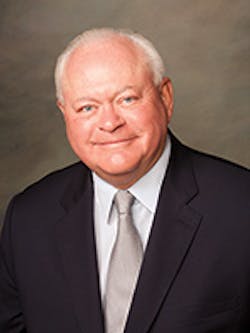Retooling to prosper with $50 oil
SINCE 1985, the global petroleum industry has experienced five down cycles (four if you don't include the spike during the Iraqi invasion of Kuwait and Operation Desert Storm), with the longest occurring between October 1990 and December 1998, during which WTI traded at about $19.50 per barrel. Oil and gas leaders responded to these cycles using the tools and technology available to them at the time. Some adapted more effectively than others.
Long periods of price stability tend to reinforce the status quo. In the years following the financial crisis of 2008 and the ensuing worldwide economic slowdown, crude oil prices were relatively steady, ranging between $75 and $110 a barrel. This five-year period of relative price stability provided the foundation for the shale revolution, which we informally mark the beginning of in 2006.
In only six and a half years, from August 2008 to March 2015, shale oil resource development launched America into the lead, as the United States grew production from 5.0 MMbo/d to 9.7 MMbo/d and became the world's largest oil producer in June 2015. It took the US more than 20 years to make that same leap from April 1950 to August 1970.
Almost as soon as America became the world's largest oil producer, price fundamentals began to weaken, and OPEC's refusal to act as the global swing producer resulted in harsh new price realities. The bad news is that many thousands have lost their jobs, and some companies with weak balance sheets and/or below average asset quality have gone bankrupt. The good news is that we have more tools in our belt to thrive during the current cycle. At Whiting, we made the conscious decision to retool our company to prosper at $50 per barrel oil, and we are using a combination of high technology, innovation, and insight to meet this challenge.
First and foremost, we're focused on creating value while operating within cash flow. Our 2016 $1 billion capital expenditure budget will be fully funded by generating a projected $1 billion of discretionary cash flow. We believe this level of investment is prudent in that it maintains production and reserves while keeping a strong balance sheet. Achieving our cash flow forecast is a function of intense cost control, refinements in geoscience, enhanced completion techniques, and leveraging technology. Simply put, our teams are doing more with less.
As we drill at a slower pace, we expect our production profile to flatten out. One benefit that may not be readily apparent is that our production volumes will become more durable, as more production comes from wells lower on the decline curve. All other factors considered, a more stable production base strengthens cash flow, reduces financial risk, and decreases the variability of results.
Whiting moved quickly to divest non-core assets to reduce our financial leverage and boost our liquidity position. To date, we've closed over $300 million of asset sales. I'm happy to say our liquidity position is $3.5 billion, with nothing drawn on our borrowing base. And, we have no long-term maturities due until 2018.
Whiting has been a leader in reducing costs at both the field and headquarters levels. Year-over-year, we've reported a 22% reduction in LOE per barrel and a 19% reduction in G&A costs per barrel. As of the second quarter of this year, our LOE per barrel was $9.25 and our G&A per barrel was $2.90. We'll drive these costs even lower as we sell off higher-cost conventional properties and continue to focus on our core properties in the Bakken/Three Forks and Niobrara. Having a large footprint in the best parts of these high-quality plays gives Whiting the advantage of scale and bargaining power.
Whiting uses leading-edge technology to improve efficiencies, recoveries, and well productivity. We use scanning electron microscopes to understand the rock at the nanometer scale level. As a result, our team has been able to discover new plays, identify sweet spots, and increase the productivity of our wells. Our proprietary geoscience technology and new-age completion techniques make all this possible.
Our company's core lab at our corporate headquarters enables us to capture the sweet spots in the Bakken/Three Forks and Niobrara formations. We drill the vertical core out in the field and within 36 hours communicate to our operating team the best place in the formation to place the lateral section of a horizontal well. Our geoscience capabilities truly set us apart.
We are also a leader in applying new completion technology. Completion enhancements at Pronghorn in the Williston Basin are delivering 50% production increases over the first 120 days. And at Polar and Walleye, our teams are reporting 50% production increases over the first 60 to 120 days. We are achieving this for only a 15% increase in well cost. Our enhanced completions are exceeding our 700,000 EUR type curve, and we're still early in the process.
Our core areas remain highly economic. At $50 oil, a Whiting Williston Basin well can generate a 31% internal rate of return (IRR). At Redtail, our world-class Niobrara/Codell play, we've proven commerciality from four stratigraphic zones, the Niobrara A, B, and C zones and the Codell zone. Our recent Redtail Niobrara wells are exceeding the 450,000 EUR type curve and can generate a 22% IRR at $50 oil.
E&P companies must adapt to endure and prosper. At Whiting, we have responded quickly to the current environment to innovate, position ourselves to thrive, and emerge from the cycle a stronger company.
James J. Volker is president and CEO of Whiting Petroleum Corp.

